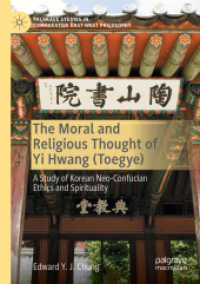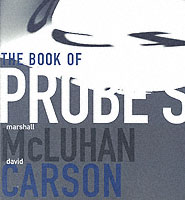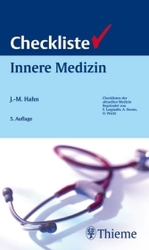- ホーム
- > 洋書
- > 英文書
- > History / World
Full Description
This volume presents the various ways in which the study of gender makes a difference in archaeological research, the archaeological academic milieu and the wider public's thinking about gender and considers avenues of future development. It addresses questions such as why gender matters for archaeology, while examining gender from various angles (including aspects such as subjectivity, embodiment, diet, multifaceted perspectives and intersectionality) and in various periods (prehistory, Ancient Egypt, Roman antiquity, the Middle Ages and the modern and contemporary periods). It also discusses the relationship between archaeology and other academic fields involving the study of gender, as well as representations and debates on gender in the media.
The theme 'gender and change in archeology' emerged out of concerns voiced within the 'Archaeology and Gender in Europe' (AGE) working community of the European Association of Archaeologists (EAA) with respect to thefuture of gender archaeology. This book unites researchers of gender archaeology from two perspectives: that of gender archaeologists from academic milieus where the study of gender has long been established and who in the meantime came to feel that this avenue of inquiry had become predictable and lost its provocative power, and that of gender archaeologists from countries where this field was only recently introduced and who, while more enthusiastic about the utility of gender archaeology, are concerned with how to disseminate it among skeptical peers. Both groups of archaeologists mainly argue that, four decades on, the study of gender in archaeology is still able to generate considerable change in our understanding of past and present-day societies. The volume is primarily of interest to archaeologists and researchers of gender studies.
Contents
Chapter 1. Introduction (Nona Palincaş and Ana Cristina Martins).- Part I: Looking for Sources of Inspiration.- Chapter 2. Sex and Gender. Watch Your Language! A View from the North (Liv Helga Dommasnes).- Chapter 3. Binary or Non-binary? Binary and Non-binary? None? Looking at Gender Expressions in the Egyptian Divine World (Guilherme Borges Pires).- Part II: Does the Study of Gender Change Archaeology?.- Chapter 4. 'Patriarchs' and 'Ladies of Power': Gender and Social Transformation in Early Peasant Societies in Western Iberia (J. C. Senna-Martinez and Elsa Luís).- Chapter 5. Gender Relations in the Production and Consumption of Portuguese Pottery (16th -18th centuries) (Tânia Manuel Casimiro).- Chapter 6. Works and Femininities in the Late Bronze Age and Early Iron Age in the Lower Danube (c. 1350-800 BC) (Nona Palincaş).- Chapter 7. Now You See It, Now You Don't: Gender and Identity in a Danish Viking Age Hoard Horizon (Bo Jensen).- Chapter 8. Gender, Change and Identity. Is Gender the Most Important Aspect of a Person's Identity or Is It Just One of Many? (Sussane Moraw).- Part III: Does the Study of Gender Change Archaeologists?.- Chapter 9. Women and Archaeological Collecting in Portugal (1893-1930) (Elisabete Pereira).- Chapter 10. Gender Divergence and Convergence in Portuguese Archaeology (Jacinta Bugalhão).- Chapter 11. Women in Archaeology in Portugal: Historiography, the Case of Costa Arthur, and Some Reflections (Ana Cristina Martins).- Chapter 12. Let's Talk About Money. Third-Party Funds and Archaeological Gender Research in Germany (Julia Katharina Koch).- Chapter 13. Figaro's Bliss: Changing Theories and Practices - Reflections on Their Effects on Everyday Work, Equality, and Careers in Academia and Other Archaeological Organizations (Tove Hjørungdal).- Part IV: Does Gender Archaeology Change Other Disciplines?.- Chapter 14. From Theory to Praxis: Why Gender Matters to Archaeology (And the Other Way Around) (Francisco B. Gomes).- Chapter 15. Food Consumption of Females and Males from the Archaeological Site of Larina - Le Mollard: An Exploratory Study (France, 6th-8th Centuries) (Luana Batista-Goulart and Isabelle Séguy).- Part V: Does Gender Archaeology Change Wider Society?.- Chapter 16. 'It's a Long Way!' The Gender Perspective in Archaeology Museums (Lourdes Prados Torreira).- Chapter 17. Always the Same Old Stories? The Representation of Prehistoric Women and Men in Scientific Communication, Popular Culture and the Media (Jana Esther Fries).- Index.








